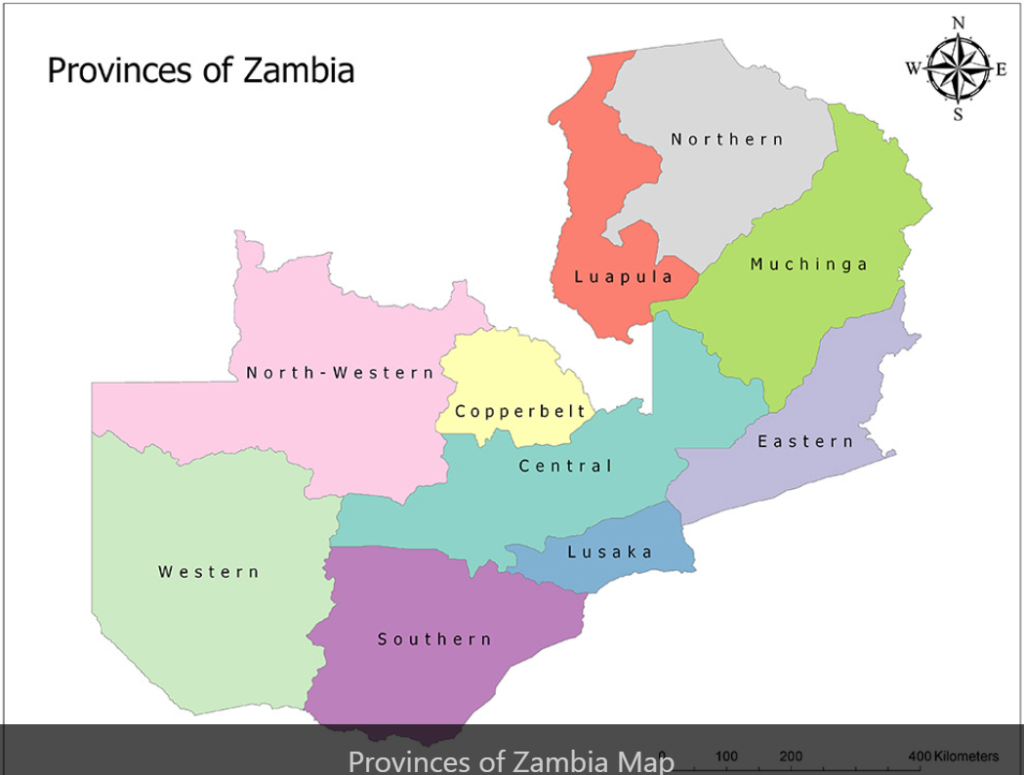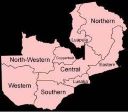This post discusses the division of Zambia into administrative purposes which is the provinces of Zambia and also discusses the Administration.
Zambia is divided into 10 provinces for administrative purposes. Each province is headed by a minister appointed by the President and there are ministries of central government for each province. The administrative head of each province is the Permanent Secretary, appointed by the President. There are Deputy Permanent Secretary, heads of government departments and civil servants at the provincial level.
Read: REGIONS OF MALI
Provinces are further divided into districts and almost all the district headquarters are the same as the district names. Each of the 116 districts in the 10 provinces has a council which is headed by an elected representative, called councilor. Each councilor holds office for five years. Each council is responsible for raising and collecting local taxes and the budgets of the council are audited and submitted every year after the annual budget. Zambia has predominantly rural provinces and hence there are only three municipal councils. The government stipulates 63 different functions for the councils with the majority of them being infrastructure management and local administration.

LIST OF PROVINCES
| Province | Capital | Area (km2) | Population (2018) | Density (people/km2) |
Districts | |||
| Western | Mongu | 126,386 | 1,041,500 | 8.2 | 16 | |||
| Southern | Choma | 68,410 | 1,852,361 | 27.1 | 15 | |||
| Northern | Kasama | 77,650 | 1,430,543 | 18.4 | 12 | |||
| North-Western | Solwezi | 125,826 | 902,631 | 7.2 | 11 | |||
| Muchinga | Chinsali | 70,405 | 1,011,655 | 11.5 | 8 | |||
| Lusaka | Lusaka | 23,490 | 3,186,336 | 135.6 | 6 | |||
| Luapula | Mansa | 50,567 | 1,215,294 | 24.0 | 12 | |||
| Eastern | Chipata | 98,877 | 1,961,269 | 38.1 | 15 | |||
| Copperbelt | Ndola | 31,328 | 2,642,132 | 81.2 | 10 | |||
| Central | Kabwe | 110,450 | 1,743,999 | 15.8 | 11 | |||
| Zambia | Lusaka | 752,612 | 13,092,666 | 17.3 | 116 | |||
ADMINISTRATION
Provincial government is set up purely for administrative purposes. Each province is headed by a minister appointed by the President and there are ministries of central government for each province. The administrative head of each province is the Permanent Secretary, appointed by the President. There are Deputy Permanent Secretary, heads of government departments and civil servants at the provincial level. Provinces are further divided into districts and almost all the district headquarters are the same as the district names. Each of the 116 districts in the 10 provinces has a council which is headed by an elected representative, called councilor. Each councilor holds office for three years.
The administrative staff of the council is selected based on Local Government Service Commission from within or outside the district. The office of the provincial government is located in each of the district headquarters and has provincial local government officers and auditors. Each council is responsible for raising and collecting local taxes and the budgets of the council are audited and submitted every year after the annual budget. The elected members of the council do not draw salaries, but are paid allowances from the council. Zambia has predominantly rural provinces and hence there are only four city councils (Lusaka; Ndola; Kitwe; Chipata) as of 2017. The government stipulates 63 different functions for the councils with the majority of them being infrastructure management and local administration. Councils are mandated to maintain each of their community centers. They also work along with specific government departments for helping in agriculture, conservation of natural resources, postal service, establishing and maintaining hospitals, schools and colleges. The councils prepare schemes that encourage community participation.


